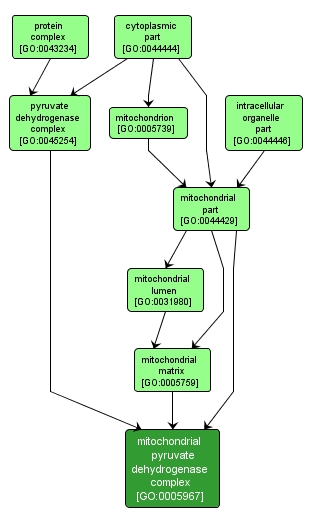| Desc: |
Complex that carries out the oxidative decarboxylation of pyruvate to form acetyl-CoA in eukaryotes; includes subunits possessing three catalytic activities: pyruvate dehydrogenase (E1), dihydrolipoamide S-acetyltransferase (E2), and dihydrolipoamide dehydrogenase (E3). The This Eukaryotic form usually contains more subunits than its bacterial counterpart; for example, one known complex contains 30 E1 dimers, 60 E2 monomers, and 6 E3 dimers as well as a few copies of pyruvate dehydrogenase kinase and pyruvate dehydrogenase phosphatase. |














